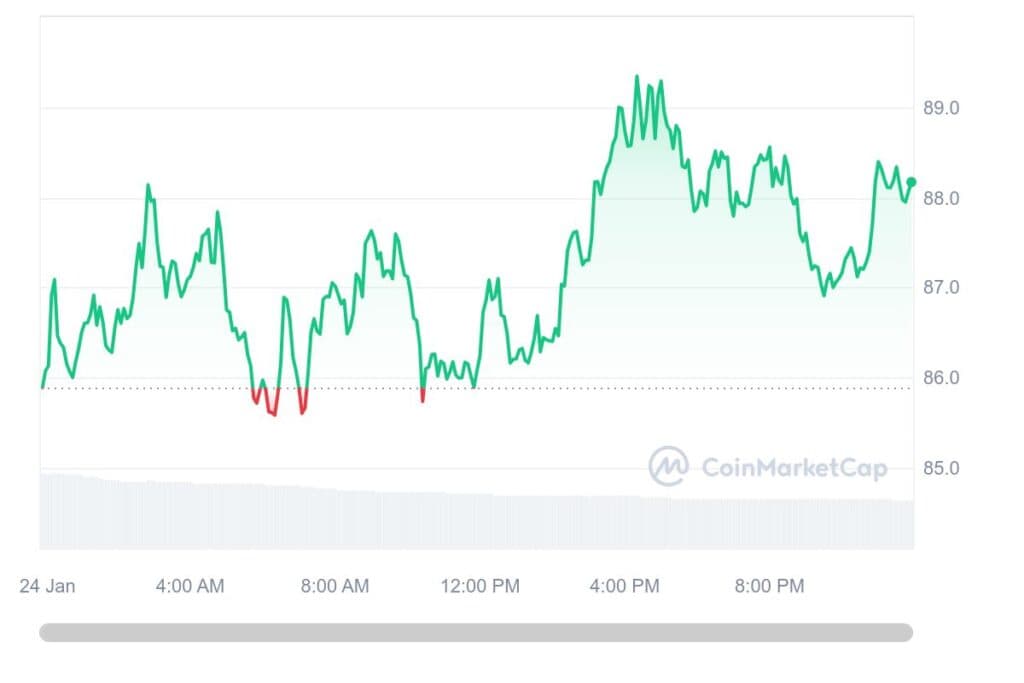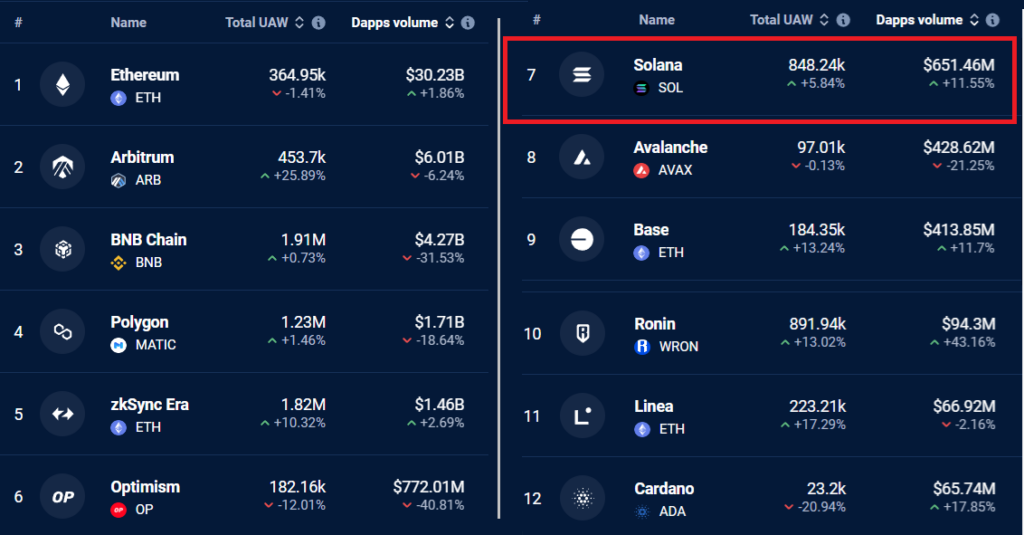- PancakeSwap secured the third-highest spot in protocol fee generation, surpassing Ethena with $4.4 million in fees over 24 hours.
- Increased transaction volumes and liquidity highlight PancakeSwap’s rising dominance in DeFi.
- PancakeSwap’s momentum may drive further investments and advancements in decentralized exchanges.
PancakeSwap has made a huge leap in the DeFi ecosystem, asserting its third-highest protocol fee earner position. The decentralized exchange earned $4.4 million in protocol fees over the past 24 hours, according to DefiLlama data released by BlockBeats News, outcompeting Ethena’s $3.92 million. The feat places PancakeSwap only behind Tether and Circle, the industry giants, as it continues to dominate the space.

The protocol fees’ dramatic increase reflects an increase in transaction volumes and user activity on the platform. As decentralized exchanges (DEXs) continue to develop, PancakeSwap’s improving metrics reflect increasing popularity for its services among DeFi users. According to OnchainDataNerd, the ability to generate substantial fees demonstrates its liquidity strength and increasing usage of its trading feature.
Recent analysis shows there is a dynamic shift within decentralized finance, with PancakeSwap climbing rapidly up the ranks. Having previously been in the shadow of well-known DeFi protocols, the platform’s recent revenue growth shows its increasing attractiveness to liquidity providers and an active trader base. This recent momentum cements its position as a serious market contender.
Industry insiders consider this fee spike to be a reflection of PancakeSwap’s robust market position and growing influence. Analysts say this momentum could attract more investments and updates to the platform, driving innovation across the DeFi ecosystem.
PancakeSwap Triumphs While Ethereum Struggles
While the platform is celebrating its success, Ethereum (ETH) is facing the opposite fate. According to CoinMarketCap, Ethereum now has a market capitalization of $219.57 billion, which is 8.23% of the total crypto market. Its price, however, has dropped to $1,820.89, with a 3.35% drop in 24 hours and an 8.36% drop in a week. The 31.32% decline in ETH’s trading volume signals the potential for a cooldown in market activities, contributing to the general volatility in the crypto market.

Research indicates that the new rise in PancakeSwap fees could pave the way for further innovation on decentralized exchanges. As DeFi platforms operate amidst evolving regulatory environments, this development could be the impetus for new creations, embracing retail and institutional investors. As volumes and users grow in their transactions, the ascendance of PancakeSwap in protocol fees marks a turning point in the ongoing development of the DeFi ecosystem.
With this momentum, the Exchange can continue climbing the ranks, challenging the dominance of centralized and decentralized competitors alike. As DeFi matures, platforms with strong user engagement and innovative solutions will characterize the next phase of decentralized finance.
Related | Trump Grants Surprise Pardons to BitMEX Founders and Former Employee







